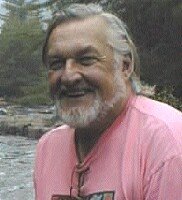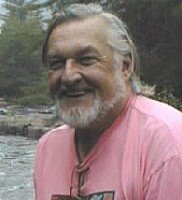A short note before we begin: I have set up an e-mail address for responses to this blog for those who want to use direct messages rather then the comment areas indicated below. It is www.nelsblog@yahoo.com
On Wednesday I visited a recommended oncologist at Exeter Hospital. His name is Doctor Danny Sims, a fellow who appears to be in his forties who is very tall and very thin. Since Joan was in transit from her visit with her old friend Mary Larson in Little Rock, Linda went with me.
Before we get into the meat of the visit perhaps it will help if you know a bit of what I have learned about lung cancer. I have been doing some online research on cancer and, to bring you up to where I am, here is a brief summary of the results.
There are two broad types of lung cancer – small cell and non-small cell. Small cell accounts for about 25% of lung cancers and non-small cell the remainder. If you are going to have one, non-small cell is preferable because it is slower to develop and slower to spread to other areas of the body.
There are four broad stages of lung cancer. They are - Stage I is a cancer confined to the lung. Stage II is a cancer that has spread to lymph nodes near the tumor and within the lung. Stage III cancer is confined to the chest, but it has spread more widely through the tissues in the chest. Stage IV cancer has spread to other parts of the body, such as the brain, liver or bones.
There are standard tools of evaluation used to determine stage and course of treatment. They are - A chest X-ray is the first step in evaluating lung cancer. Normal X-ray procedures give a good picture of the chest cavity, but a CT scan (an advanced X-ray system) is usually done to show the lung mass, lymph nodes and the rest of the chest cavity in much greater detail. These X-rays may help evaluate the extent of a lung mass and suggest the likelihood of cancer. A diagnosis of lung cancer, however, requires a biopsy.
An MRI (magnetic resonance imaging) may be part of the evaluation for a lung mass. It is especially useful in evaluating the brain and bones, but it does not visualize the lung well.
A PET scan is a relatively new nuclear medicine technique that may be very helpful in evaluating and identifying the stage of a lung mass. If a lung mass "lights up" on the PET scan, it is a lung cancer most of the time. If the mass does not light up on the PET scan, it is not likely to be a cancer. The test also evaluates the entire body to search for any evidence that the tumor has spread to lymph nodes or other areas of the body.
During my stay in the ER I had the X-ray and CT (CAT) scan procedures as well as a biopsy. So the doctor had some information to work with during our visit.
On my visit I was, first, interviewed by a lady who described herself as a social interactive who talked to us about the help services, both material and emotional, available through the hospital and associated organizations
A Nurse Practitioner who took a lot of general data was next and then Doctor Sims. He asked a number of questions about possible symptoms that I had experienced. These were limited to the one chest pain session that brought me to the ER and the preliminary diagnosis procedures, some weight loss and some unproductive coughing. He took me to an examining room and listened and felt the areas in my body where symptoms might be found.
On our return to the interview room Sims stated that the broad range of possibility at this point was within stages one through three but his thought at that point was perhaps stage 1b. He said that the radiologist had indicated some involvement inside the lung but outside the site of the tumor shown on the CAT scan but Sims said he had not be able to find it in his examination of the results of the test.
I had some blood drawn and made appointments for PET scan and an MRI brain scan for next Wednesday to determine if the cancer has spread to other parts of the body and a visit to review results and possible treatment options or second opinion possibilities on the following Wednesday March 28th.
Meanwhile I am encouraged by the preliminary diagnosis because it indicates that there is an indication that I am in an early stage and therefore in a position to put up a good defense. My reference to “high ground” is from my old Marine Corps training which teaches that one should hold high ground whenever possible because it gives you a strategic advantage over the enemy. Cancer is now my enemy and I need to develop, with my doctors, family and friends a strategy and the tactical tools to defeat that enemy. The defeat of that enemy along with the lessons of the experience is what I hope I will take away from this period of my life. In all combat situations there is risk but a well-prepared strategy and tactics make the overall risk less and the chances of victory increase. Stay tuned and we’ll see how it plays out.
Saturday, March 17, 2007
Subscribe to:
Post Comments (Atom)


4 comments:
Nels,
Andrea and I think the world of you and have missed not seeing you as much. You have faced much in your life and this is just one more hurdle for you to cross but know that your friends are here to help and support you along the way. Andrea and I give you a virtual hug until we can give you a real one. If there is anything that either of us can do, please call on us. Send our love and hugs to the rest of your family as well and tell Linda that we miss seeing her as well. Stay strong.
Eric and Andrea
Nels,
I read of your situation from Walt Boyes Bolg.
Can I offer you my thoughts and best wishes for a healthy outcome.
Hearing that you have had an early diagnosis is something positive to draw from.
Never underestimate the value of positive thought or laughter as an effective treatment. Having lost most of my mentors who were also close friends to this manacing of all diseases the power of positive thought and the healthy approach you are taking towards it will at the very least extend you time with us and at best stop the disease in its tracks. Perhaps it is a sign of working in the industry as an occupational hazard but I hope not. All the best and stay happy and healthy
March 18, 2007
from the department of lifelong learning…
Category: Uncategorized | Posted by waltboyes @ 1:41 pm |
A View from the High Ground
A week ago last Friday, I got a call from one of my closest friends, Nels Tyring.
Many of you may know who Nels is, or know Nels, since he is commonly considered the Father of Control System Integration. If you don’t know who Nels is, or don’t know Nels, bear with me, because I think this is important for all of you to read.
Nels, as is his wont, got right to the point. “Walter,” he said, “I’ve got a problem.”
He went on to tell me that he, at the age of 75, had just been diagnosed with lung cancer.
“I don’t know why, exactly,” he said, “but I don’t appear to be going through the normal stages of what happens when you get this kind of news. I’m looking at it as just another experience.”
“Maybe,” he went on, “it is because fifty-odd years ago I had a chance to really look death in the face, and it hasn’t scared me since.”
I can’t imagine anything scaring Nels Tyring. Although he is reluctant to speak of it, and when he does speak of it, it brings tears, Nels, as a young Marine, was one of the few who walked back from Inchon Reservoir, bearing their brother dead. No one who did that need ever explain about bravery, valor, manhood, or fear.
He is a most remarkable man. A self-taught engineer, he became an expert on control valves, then on automation and controls, founded one of the first successful control system integration companies, TVC Inc., guided the ISA Publications Department for over twenty years, helped found the Control System Integrators Association, the Industrial Computing Society, and lots of other stuff.
As Nels has gotten older, his zest for new experience has continued unabated. For his 65th birthday, I dropped him off with a folding touring bicycle at the Amtrak station in St. Paul, MN. He spent the next week or more, riding his bike across Wisconsin, meeting and talking to people all along the way. He wrote of his experiences, and shared them with his friends.
On another birthday, later, he sailed as supercargo on the replica sailing vessel, the Beagle, which sails to the Galapagos Islands every year, and yes, that “old” man climbed the mainmast.
It doesn’t surprise me that he’s looking at what may be the end of his life as “just another new experience.”
Nels is chronicling his new experience at Nelsblogs. Some of the things he’s written are astounding.
“I am encouraged by the preliminary diagnosis because it indicates that there is an indication that I am in an early stage and therefore in a position to put up a good defense,” he writes.
“My reference to ‘high ground’ is from my old Marine Corps training,” he continues, “which teaches that one should hold high ground whenever possible because it gives you a strategic advantage over the enemy.
“Cancer is now my enemy and I need to develop, with my doctors, family and friends a strategy and the tactical tools to defeat that enemy.
“The defeat of that enemy along with the lessons of the experience is what I hope I will take away from this period of my life.
“In all combat situations there is risk but a well-prepared strategy and tactics make the overall risk less and the chances of victory increase. Stay tuned and we’ll see how it plays out.”
The phone call a week ago last Friday ended with him agreeing to write another article for Control! The article is going to be about why many automation projects fail, and what you can do about it. It is taken from a speech Nels gave a couple of months ago at the Northeast Combined Heat and Power Group at UNH in Durham, NH.
Nels is like that.
Early detection of Lung cancer saves lives, or as I often say, “Early detection-early survival.”
Post a Comment